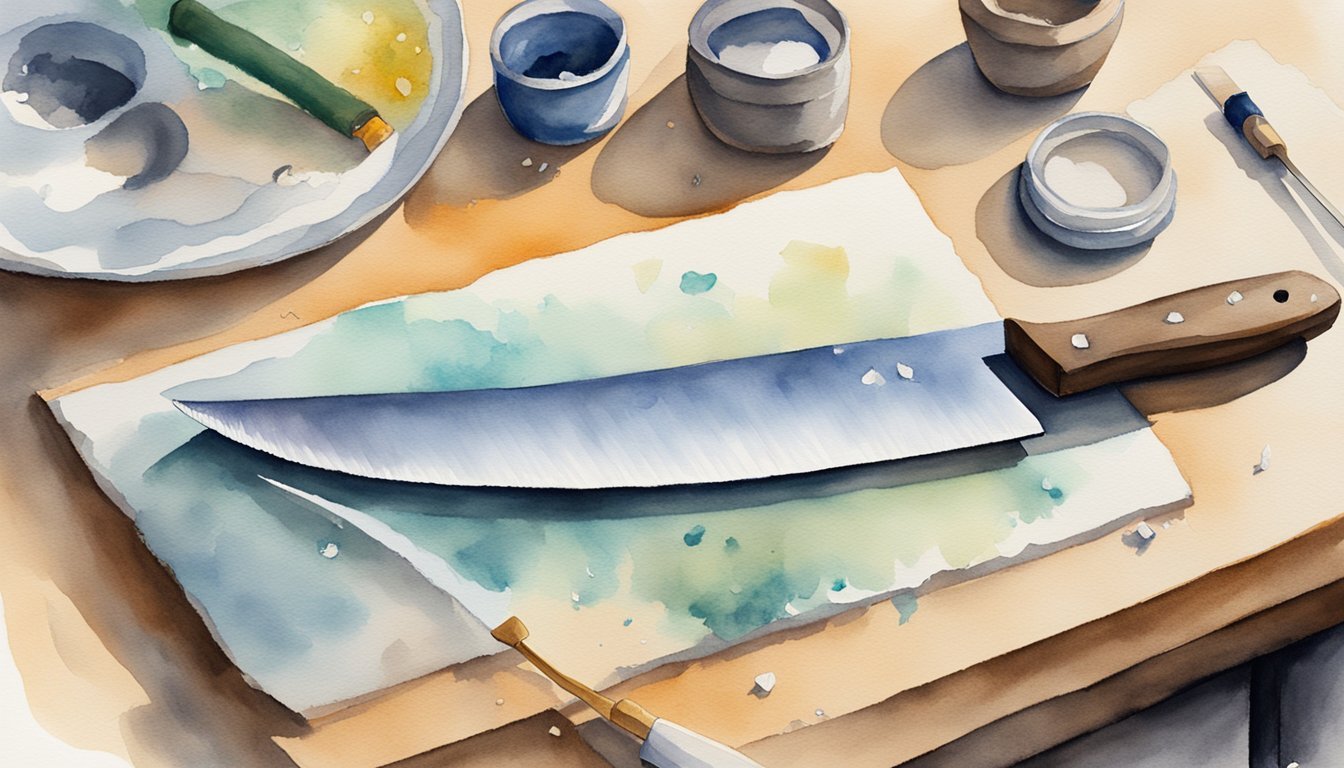Understanding the World’s Sharpest Knives
The quest for the world’s sharpest knife takes us through a variety of materials and designs that have been honed over centuries. These cutting-edge tools reflect a blend of ancient tradition and modern engineering.
Materials and Craftsmanship
The proper selection of materials is crucial for creating knives with exceptional edge retention. Obsidian, a type of volcanic glass, has been used since the Stone Age to create cutting tools with incredibly thin and sharp edges, often down to a few nanometers. On the other hand, modern knives also utilize high-quality metals like carbon steel, which is known for its strength and durability, allowing for prolonged sharpness.
Design and Geometry of Blades
Knife sharpness is greatly influenced by blade geometry. Blades that taper to a slender point and maintain a consistent angle tend to be sharper. Japanese knives are often cited for their exquisite blade geometry, which allows for precision cutting. The angle and finish of the edge are measured in degrees, with a more acute angle equating to a sharper blade material.
Historical and Modern Applications
Historical significance is embedded in the evolution of the knife. Stone Age tools such as arrowheads and early cutting tools evolved into the sophisticated surgical instruments used in modern medical applications. Historical and modern knives demonstrate the varied uses of sharp blades, from crafting and hunting in ancient times to culinary and medical uses today.
Types and Comparisons
Among the sharpest knives in the world, Japanese knives frequently stand out. The Japanese approach to knife making focuses on meticulous craftsmanship and ultra-refined steel. Meanwhile, German knives, often made from stainless German steel, are praised for their durability and are preferred for their weight and balance by some chefs. The Global G-2 is an example of a sharp and flexible knife desirable among professionals.
Art and Science of Sharpness
The science of sharpness involves understanding the molecular structure and the precision needed to achieve molecular sharpness. Knife makers must master the art of maintaining the fine balance between a sharp edge and the strength of the blade. The process of sharpening a blade to the point where it can perform at its peak is both a science and an art form, reflective of the culture and technology from which the knife originates.
Practical Aspects of Knife Use and Maintenance

When it comes to kitchen knives, balancing the sharpness and durability of the blade with proper maintenance and handling is key to achieving optimal performance and extending the lifespan of cutting-edge tools.
Maintaining the Sharpest Edge
A knife’s sharpness determines its efficiency and precision in cutting tasks. To maintain the sharpest edge, regular honing with a steel rod is recommended for realigning the edge, while periodic sharpening with a whetstone can refine it. Sharpening techniques should cater to the particular type of knife, considering the blade’s angle.
Safety, Handling, and Ergonomics
Safety is paramount when handling the sharpest knives. Users should ensure that the grip is comfortable and the knife’s weight and balance are suitable for their cutting style. A secure grip minimizes the dangers of slippage, which can cause injuries. Proper storage, like using a knife block or magnetic strip, also plays a critical role in safety.
Choosing the Right Knife for the Job
Selecting a knife is often a matter of personal preference, but certain tasks require specific types of knives. A chef’s knife offers versatility for a range of chopping tasks, while a santoku provides precision with a thinner blade. Filleting knives cater to delicate tasks requiring flexibility, ensuring the user can maneuver the blade smoothly.
Drawbacks and Considerations
The sharpest knife may not always equate to the most durable. Materials like obsidian can achieve unparalleled sharpness but may be brittle and prone to chipping. High-end steel knives offer a compromise between sharpness and fragility but require consistent blade maintenance to prevent the edge from becoming dull.
Culinary Excellence and Variety
A comprehensive knife set empowers home cooks and professionals to produce culinary masterpieces. The versatility of having a range of knives, from chef’s knives to specialized cleavers, allows for precision and ingenuity in the kitchen, adapting to a wide variety of ingredients and recipes.

